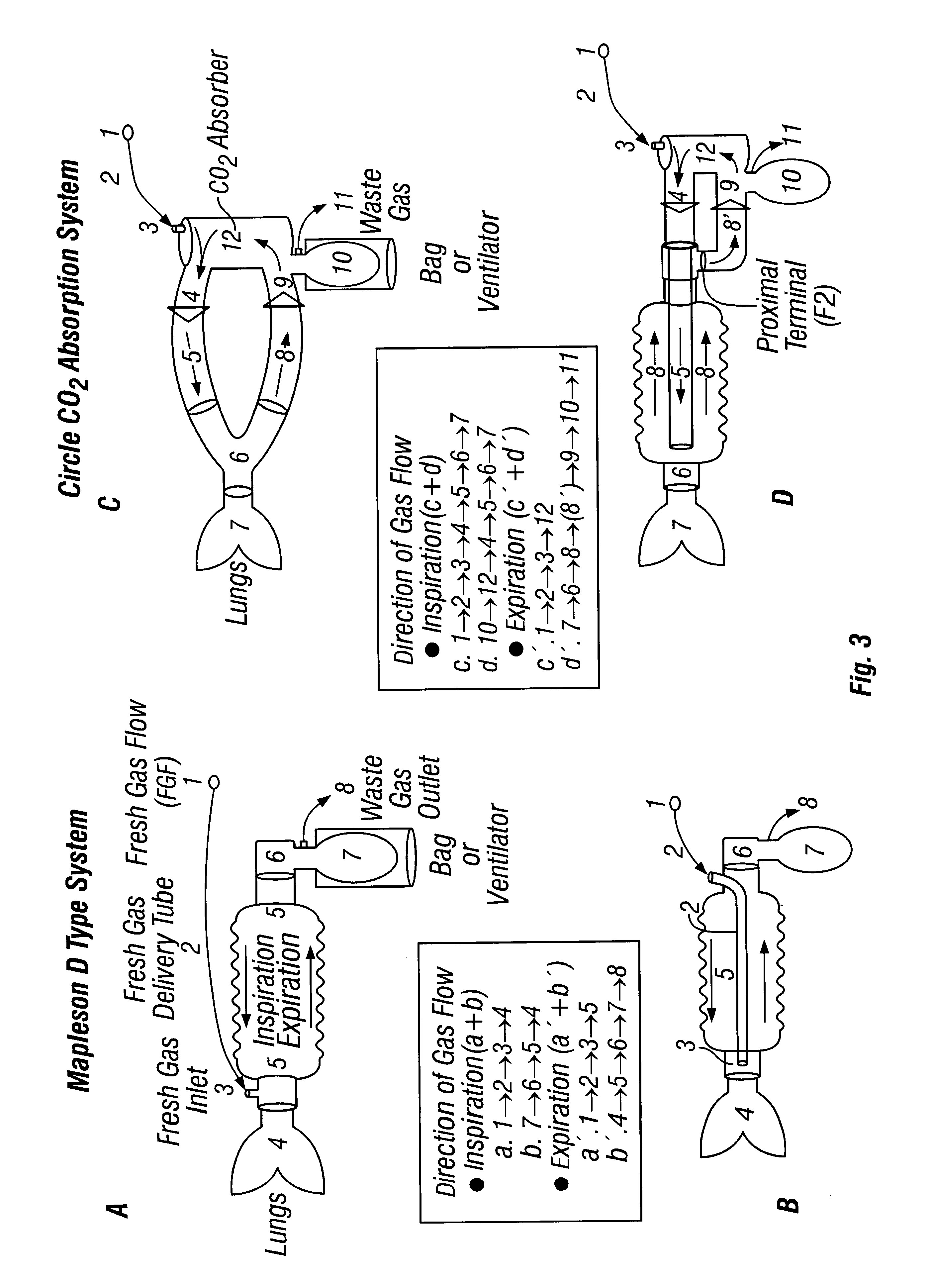Breathing circuits having unconventional respiratory conduits and systems and methods for optimizing utilization of fresh gases
a technology of fresh gas and respiratory conduit, which is applied in the field of breathing circuits having unconventional respiratory conduits and systems and optimizing can solve the problems of limiting the function limiting the possibility of low flow anesthesia, and limiting the use of both types of circuits, so as to achieve reliable low flow anesthesia, optimize the utilization of fresh gas, and optimize the effect of anesthesia concentration and amount of rebreathing
- Summary
- Abstract
- Description
- Claims
- Application Information
AI Technical Summary
Benefits of technology
Problems solved by technology
Method used
Image
Examples
embodiment
Hybrid Circuit Embodiment
A hybrid circuit comprises conventional conduit and at least one flexible plastic sheet (e.g., polyvinyl) that forms a wall defining two or more lumens in the conduit. FIGS. 9A-B illustrate the components and operation of hybrid circuit with a common contractile wall of the present invention in schematic form. First and second tubes 116 and 118 share a common outer wall 120 that is axially expandable and contractible, and a common dividing wall 122 that can axially expand and contract with the outer wall. This embodiment may be constructed of pleated material such as that used to form ULTRA-FLEX®. Alternatively, common dividing wall 122 may be formed of a flexible plastic sheet, which permits the cross-sectional size of the two lumens to accommodate usage conditions. For example, when pressure is higher in one lumen than the other, the wall expands into the lower-pressure lumen to make it smaller than the higher-pressure lumen, while the former lumen becomes...
examples
The following hypotheses were tested: a) The inspired and the delivered fresh gas concentration (FI / FD) ratio is dependent on the fresh gas flow (FGF) over time; and b) Using the F3™ COMBO system the FI / FD ratio can be improved at low flows.
The effects of lower FGF on patients' inspired gas concentrations were compared to the delivered gas concentrations (i.e., anesthetic concentrations indicated by the vaporizer's dial setting) during general anesthesia.
After obtaining institutional approval and patient consent, a total of 34 healthy (ASA class I) adult patients undergoing elective surgery were included in the studies. The studies were conducted using standard methods of anesthesia: Anesthesia was induced with thiopental and endotracheal intubation was facilitated with 1 mg / kg succinylcholine. Anesthesia was initially maintained with high flow (5 L / min) of 3 / 2 N2O—O2 mixture and 1.5% isoflurane as per vaporizer setting using the standard anesthesia circle system with CO2 absorption...
PUM
 Login to View More
Login to View More Abstract
Description
Claims
Application Information
 Login to View More
Login to View More - R&D
- Intellectual Property
- Life Sciences
- Materials
- Tech Scout
- Unparalleled Data Quality
- Higher Quality Content
- 60% Fewer Hallucinations
Browse by: Latest US Patents, China's latest patents, Technical Efficacy Thesaurus, Application Domain, Technology Topic, Popular Technical Reports.
© 2025 PatSnap. All rights reserved.Legal|Privacy policy|Modern Slavery Act Transparency Statement|Sitemap|About US| Contact US: help@patsnap.com



